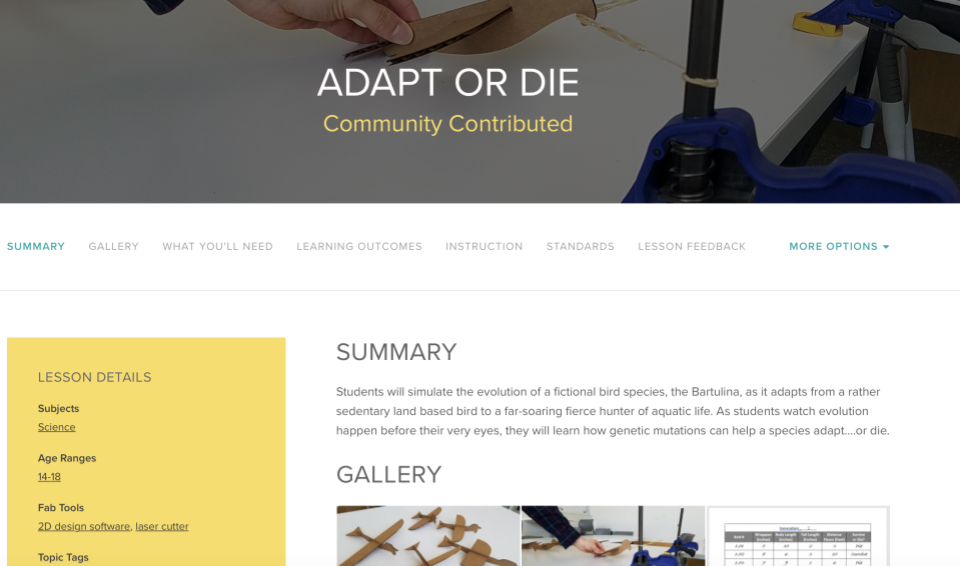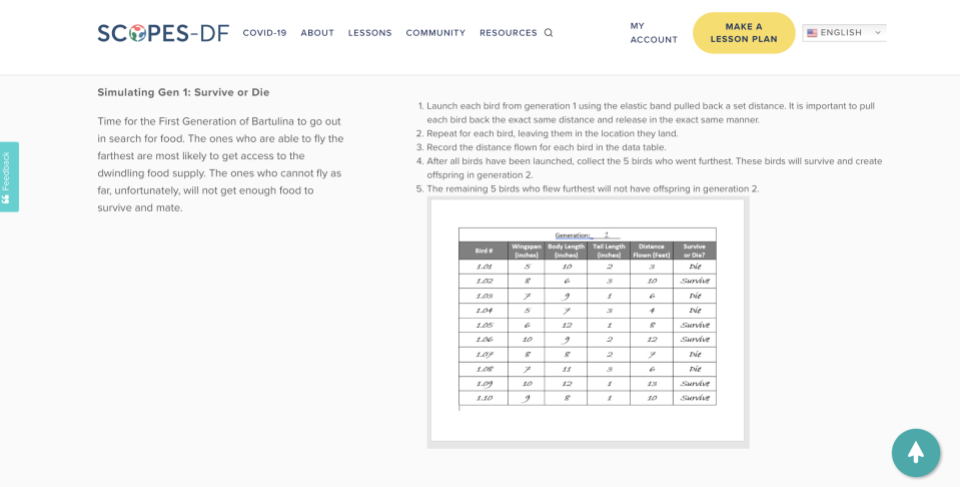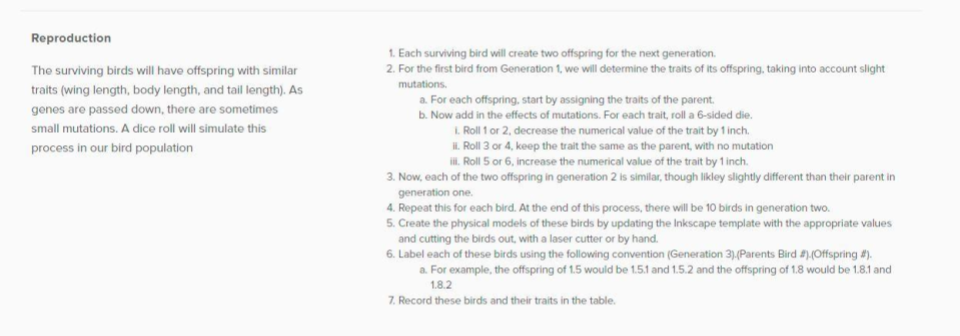Hi everyone! My name is Desmond and I’m a student at Oberlin College studying creative writing, philosophy, and mathematics. This winter and spring, I’m working as an intern at the Fab Foundation. One of my first tasks has been to assist in the inventory of the lessons on SCOPES-DF. This has involved a deep dive into the world of digital fabrication and STEM education. I’ve been interested in math education reform for a long time, but the ideas on SCOPES-DF go way beyond that, and I’ve enjoyed exploring all of the lessons the Fab community has contributed. Here, I want to share some of my first impressions of the lessons I’ve explored. I will be posting reviews for the next three weeks, and in each post, I’ll feature a favorite lesson from the ones I’ve inventoried along with some technical pointers to enhance the average lesson on SCOPES-DF.
Featured Lesson: Adapt or Die by Danny Smith
We’re all familiar with the theory of evolution; depending on the environment, some traits provide an advantage to a species and those traits become more common over time. Still, it’s a concept that’s particularly difficult to show students in real life since the process happens over such a long period of time. Danny Smith’s lesson “Adapt or Die” simulates evolution in a way that students can see play out in real time, combining digital fabrication with what could almost be called a field day in exploring how evolution works.

In “Adapt or Die,” students create a set of bird gliders with random traits using a laser cutter and rapid prototyping techniques. They then launch each bird using a rubber band and measure how far they were able to fly. The birds who survive are able to “reproduce” and pass along glider characteristics to subsequent generations, yielding offspring that have similar traits (aside from some mutations). The offspring then compete again, following the same pattern of adapting or “dying”. Students are able to discover, in real time, which traits are advantageous to the population (and which are not) while tracking the pedigree of each bird through a detailed worksheet supplied in the lesson.

“Adapt or Die” exhibits how attention to detail and specificity can go a long way. The lesson provides good supporting materials, thorough instructions with examples, and well defined learning objectives. While many lessons on SCOPES-DF are creative and interesting, they don’t all refine that creativity through a detailed lesson plan. “Adapt or Die” is thoughtful and communicated well to potential instructors. I especially like the format of the instructions: each step of the simulation is broken down into smaller steps, which are explained with bullet points that combine to form an easy to follow lesson.

Take your lesson to the next level: Formatting & Concluding Statements
Often, when I get to the end of a lesson on SCOPES-DF, I have to go back through the material again to process all the new information. If I were a student being taught that lesson, I might leave the class excited but not quite able to put my finger on what I had learned. For most lessons, concluding statements are a great way to help students cement their understanding of the material and help teachers better understand how the lesson functions. This concluding statement could be as simple as restating the learning objectives that were written at the beginning of the lesson, yet is something that I see few lessons doing.
Additionally, most lessons would benefit from half an hour of formatting, clarifying, and spell checking. Many SCOPES-DF lessons don’t include pictures, or require clarity for specific instructions and learning objectives. The SCOPES-DF website has a set format for lessons: learning objectives, materials, and other basic information are at the top, instructions are in the middle (including the name of each step on one side and details and pictures on the other), and standards at the bottom. However, many lessons don’t fully follow that format and consequently lose clarity. If the instructions in a lesson are clear and well formatted, it becomes much easier to understand and execute the lesson.
Final Thoughts
Mainstream STEM education has some well-documented shortcomings: an overemphasis on testing, an individuating curriculum, and a disconnect from the world students live in (as exemplified by the ever-present memes about the mitochondria, which is, I am told, the powerhouse of the cell). However I’m optimistic about its future. Through methods such as incorporating digital fabrication into their lessons, educators grant students creative autonomy and provide tools students can use to express themselves within their learning. This allows students to participate creatively in their education rather than just being passive consumers of information. Math and science are deeply human pursuits, and I’m inspired by the SCOPES-DF educators who are finding ways to weave creative and collaborative digital fabrication projects into their curriculum.
Tagged: 100, Adapt or Die, Desmond Hearne Morrey, Featured Lesson, lesson review, lessons, One hundred, review

